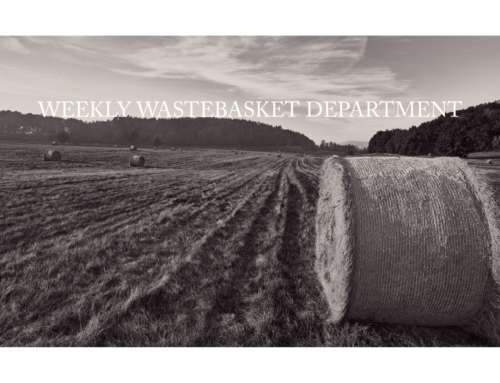A lot has been written about the initial failure of the farm bill to pass the House of Representatives in June, and the passage last week of a farm bill that increased corporate agriculture subsidies while deferring nutrition spending decisions for another day. But amidst all that coverage, important details are getting lost.
Let's start with some basic observations: the original $1 trillion bill that failed 195-234 in June was a bad bill. Some Democrats voted against it because they rejected the $20.5 billion in cuts to the Supplemental Nutrition Assistance Program (SNAP, commonly known as food stamps) while others voted “no” because expanding corporate agribusiness subsidies during a year of expected record farm income was too much to stomach.
More than 60 Republicans voted against it, many because they thought the cuts to SNAP were not large enough and the reform not meaningful enough; others voted against it because, like some of their Democratic colleagues, they thought the corporate agribusiness subsidies were too large and, as a result, the deficit reduction too insignificant.
Conservatives wanted reform that changed the nature of both the corporate agriculture subsidies and the nutrition program: they said they wanted to (1) separate the nutrition and agriculture portions of the bill, letting each stand on its own merits, (2) repeal the outdated Depression-era “permanent law” that allows the farm lobby to pressure Congress to pass unnecessary agriculture subsidies, and (3) save at least $100 million from agriculture program reforms to put toward deficit reduction. We agree – and we hoped that the first two steps would lead to the resulting savings.
The bill that passed the House last week 216-208 did separate agriculture from nutrition, and it did repeal permanent law. But not only did the bill not save $100 billion from agriculture subsidies, it outspent similar provisions in the Senate farm bill, the president's budget request and the House Republicans' budget, and ended up saving only $12.8 billion.
It also made crop insurance the most expensive subsidy currently on the books – more expensive, continued the discredited direct payment program for cotton for two more years, increased government-set target prices and created three new “shallow loss” programs that guarantee record levels of farm income at the expense of taxpayers. Worse yet, the bill puts into law new dairy profit guarantee subsidies, market distorting sugar subsidies and other farm subsidies, allowing them to continue in perpetuity.
So instead of putting nearly $50 billion toward deficit reduction by eliminating direct payments – something nearly every producer and farm organization agreed to – the resulting savings are squandered on new special interest carve-outs and unnecessary subsidies that will actually expand the footprint of Washington in agriculture. This is more than fiscally irresponsible. It is reckless and greedy. The large businesses that benefit from federal agriculture programs are already enjoying record profits, and this bill only ensures that they will enjoy those record profits for years to come at the expense of taxpayers.
Many Democrats and left-leaning commentators have decried the vote last week as mean-spirited because it excludes all SNAP funding decisions. We've got nothing good to say about last week's vote, but this particular argument is a red herring: spending for SNAP is ultimately set in the annual discretionary appropriations process. It can certainly be changed and reformed in a farm bill, but spending levels are ultimately determined during appropriations. The vote last week actually had nothing to do with levels of nutrition spending.
We have our doubts about the seriousness of the House majority leadership in setting a debate and vote on the nutrition portion of the original farm bill: there are many competing views in the Republican caucus about the acceptable level of SNAP cuts (ranging from $4 billion to more than $20 billion); disagreement about the importance of changing the current work requirements; and differences on whether the current structure of SNAP should instead be transformed into state block grants. And for each of these disagreements among Republicans, there is significant opposition from Democrats. So it is hard to see how a free-standing nutrition bill advances from the House floor, and eventually how a full bill comes out of a conference committee with the Senate and is signed into law by President Obama.
No matter what happens next, the sky isn't falling. Even if nothing is done before the current farm bill extension ends on Sept. 30, 2013, many farm bill programs are authorized in permanent law, meaning they will continue regardless of whether or not Congress passes a farm bill. Crop insurance, the noninsured disaster program and some conservation programs fall in this camp. Nutrition programs will also likely continue because they are subject to appropriation every year anyway. So despite Agriculture Committee leaders' claims that farmers won't be able to plan for the year ahead without a farm bill, producers of over 120 crops and livestock will continue to receive crop insurance premium subsidies even if a bill fails to arrive on the president's desk.
Instead of continuing the political posturing and jamming a final farm bill through another undemocratic process, we need to go back to the drawing board to create a more cost-effective, transparent, responsive, and accountable farm safety net that reduces our $16.8 trillion national debt. If another farm bill extension is considered later this year, the first thing to go should be direct payments and the failed ACRE shallow loss program – something both the House and Senate agree upon.
Put the full $50 billion toward deficit reduction. Then openly debate agribusiness subsidies separate from nutrition so we can discover the merits of each instead of having farm subsidy proponents dictating outcomes at the expense of average farmers and consumers. Only then will taxpayers get fiscally responsible and accountable farm and nutrition policies.














Get Social